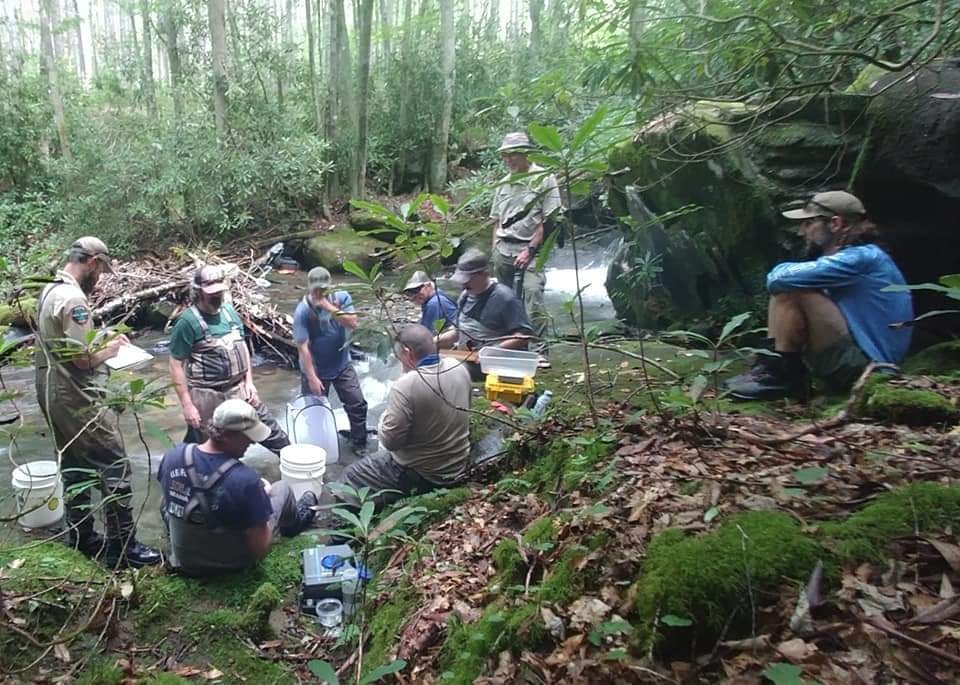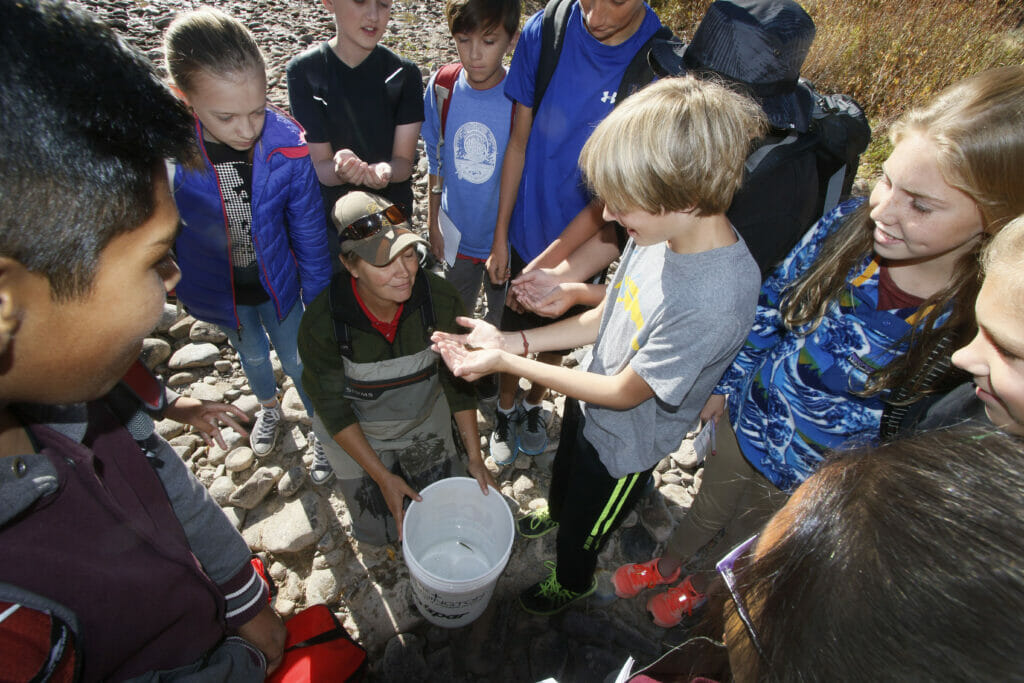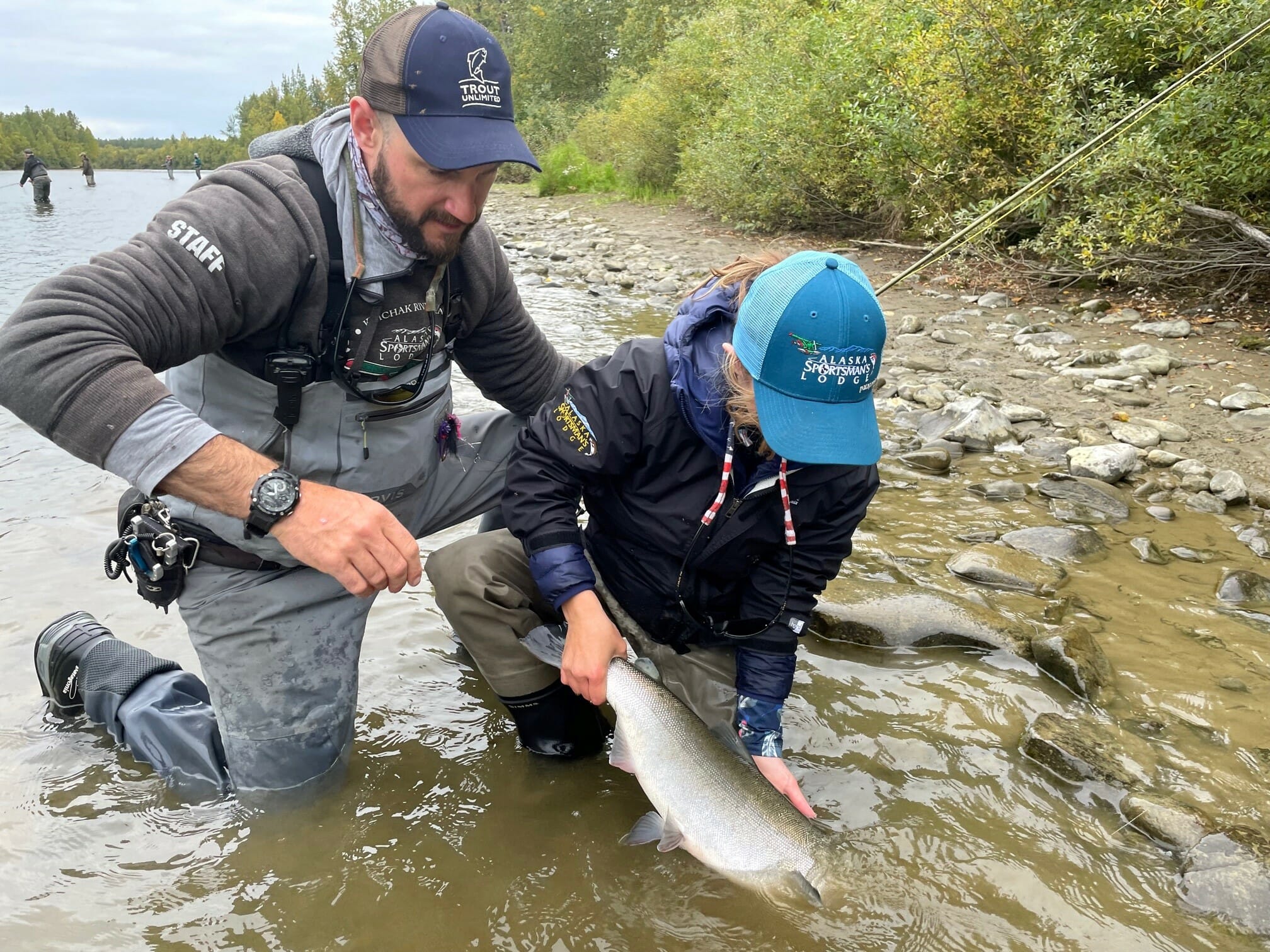The secret sauce of Trout Unlimited is the fact that we enjoy a grassroots network of volunteers with deep roots in their communities and incredible passion for the waters they live, love and fish. Their knowledge, energy and passion are strengthened by hundreds of professional TU staff—biologists, restoration practitioners, water lawyers, organizers, and scientists. These staff are not only experts in their fields, they are alchemists—able to leverage millions of dollars into watershed- and regional-level campaigns to care for and recover our lands and waters.
Those two ingredients are made better by our amazing partners—state agencies; local communities; federal agencies such the Forest Service, the National Oceanic and Atmospheric Administration Fisheries program, the Fish and Wildlife Service, and more; industry partners, including fly fishing companies and shops, other outdoor companies, and mining companies—the list goes on.
Here lies the promise of our plans to develop a shared agenda of priority waters. Trout Unlimited has quadrupled in size over the past decade and now puts over $75 million per year on the ground to care for and recover rivers and streams. Last year—during a pandemic, mind you—our chapter network leveraged another $18 million including volunteer labor for wild and native trout and salmon.
The unfortunate fact remains, however, that the loss of wild and native trout and salmon and steelhead outstrip our ability to keep pace. The process of identifying a shared network of priority waters can reverse that trend.
The promise is powerful.

- Consider the case of “Sky Island” and Wilson Creek in North Carolina. Over 100 volunteers were trained by, and worked with, our staff to identify hundreds of habitat problems that could imperil native brook trout and wild populations of browns and rainbows, if not addressed.
- In Wisconsin, TU staff are working with volunteers to monitor the effects of groundwater withdrawals, and to better understand their effects on surface flows.
- Volunteers in Maine sampled remote ponds and coastal streams to document brook trout populations. The result? Pond protections for areas with native fish that preclude the use of live fish as bait (a source of invasive fish introduction) in northern Maine.
- In Pennsylvania, volunteers worked with staff to identify, and then advocate for, wild trout streams. As a result, more than 7,000 miles of wild trout streams received additional protections.
The beat goes on in the West.

- The Snake River Cutthroats (ID), Westslope Cutthroats (MT), the Jackson Hole (WY), and the Madison Gallatin chapters (MT) all provided substantial core funding to hire staff and enable large-scale watershed restorations within their chapter areas.
- The Three Rivers Chapter (WA) helped to create the Lake Sammamish Kokanee Program and are helping TU staff to make the Lake Sammamish Urban Wildlife Refuge Partnership a reality. This one is special as it involves engaging several “minority-majority” communities in the work of recovering kokanee and connecting people to their local lands and waters.
- In Colorado, TU staff partner with chapters and council staff on implementation of the Colorado State Water Plan including participation in individual “Basin Roundtables” to help identify water and restoration projects.
- Finally, the East Yellowstone Chapter works with TU scientists and the Park Service to help suppress invasive lake trout and recover native Yellowstone cutthroat trout.
Today, we leverage tens of millions of dollars to engage communities in the good work of repairing and renewing our rivers and streams. By engaging the volunteers, state and federal partners, industry, and communities in a shared network of priority waters, we can leverage hundreds of millions of dollars for wild and native trout and salmon and the diverse communities that depend on them.



